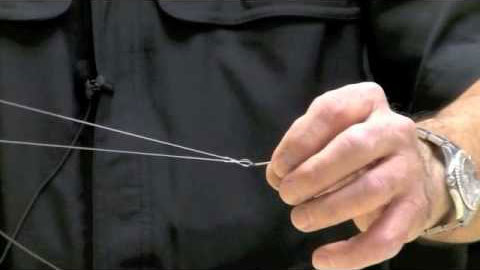How to choose a fishing line
Walk in to any fishing tackle store and you’ll be met with a variety of fishing lines, each with different characteristics and applications. From nylon based monofilaments to fluoro carbon, braided lines to dacron – what are they and how are they used? Add to the mix a range of specialty lines including fly lines and lead core lines and it becomes apparent that there is a multitude of lines for a variety of general and specialised fishing situations.
Monofilament
The humble fishing line that most people know and love is monofilament line which is simply a technical term to describe a single strand of nylon. Nylon based polymers are melted then extruded through tiny holes to create line of different thickness and strength. The flexibility of mono makes it relatively good for tying most knots and easy to cast. Mono will generally stretch before breaking and this stretchiness can help cushion any shock transmitted when casting or fighting a fish. It comes in a variety of colours from a transparent clear to high visibility fluorescent pinks and greens making it suitable for a wide range of applications. Mono lines are relatively cheap to buy and easy to use making them a good all round option for broad general purpose use.
Fluorocarbon
Fluorocarbon lines look very similar to monofilament lines with a few distinct advantages. Fluorocarbon has a harder outer surface so is more abrasion resistant, it is also denser and heavier than mono so it sinks which helps to minimise slack line. The hard outer coating however does make it more difficult to tie knots in than mono. Fluorocarbon also has a lower optical density or refractive index than monofilament lines, closer to that of water, which makes fluorocarbon arguably less visible under water. It is however more expensive than monofilament and is therefore often used as a trace or leader material.

The super line market has flourished over the past two decades with braided lines now common place on many fishing reels. A distinction needs to be made between true braided line and fused lines. Fused lines are typically thermally bonded strands of polyethylene fibre versus braided lines which are strands of polyethylene braided together in the same way that rope is braided. The process of fusing fibres results in a stiffer line on average than braiding making fused lines more manageable in lighter line classes. The key advantage of any form of “braid” is the strength, as it is far stronger than monofilament nylon so you can use a much thinner braided line than the equivalent monofilament. This allows you to get more line onto your reel and obtain longer casts as it travels through the air easier than the thicker mono. The lessened resistance also reduces drag in the water meaning you can use less weight to get to the bottom than if you were using thicker mono. Finally, braided lines offer almost zero stretch resulting in optimal contact with the fish and improved sensitivity as bites and bumps are transmitted through the line. There are downsides however with braid being markedly more expensive than cheaper monofilament lines, braid having inferior abrasion resistance and being more difficult to tie knots with. Specialty hollow braided lines and Dacron are worth mentioning and are often used when knotless connections are required. With hollow braids, monofilament can be spliced into the hollow core, creating a seamless connection based on friction – look up “Chinese finger trap” and you’ll get the idea on how hollow braid and Dacron tightens over a mono leader.

